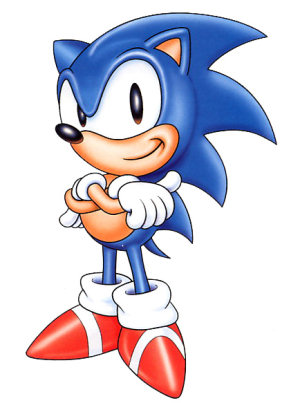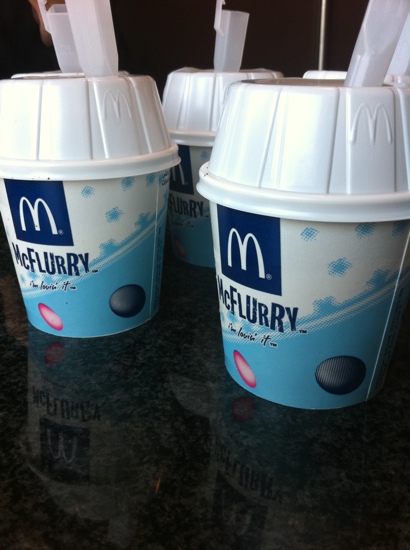Saving Sonic
When most people think of hedgehogs — most people I know, anyway — they think of this guy.

He’s blue. He’s fast. He picks up golden rings while spinning across impossible terrain. He’s basically unstoppable. He’d never fall for something like this:

Those are McFlurrys. Ostensibly, McFlurries are food. They’re a blended soft-serve ice cream dessert that usually has cookies, cake, candy, etc. mixed in. McDonald’s introduced it to its menu after a successful test in Hawaii in 1997, and, as an aside, the process to make them is really neat. Wikipedia notes that in most places — not New Zealand or Australia (where they’re mixed by hand) — the blender uses a “specially designed spoon with a hollow handle that attached to the mixer spindle” which “is used once then given to the customer to use to eat the product.”
But some customers don’t use spoons. They just stick their heads in and lick the McFlurry cup. These customers don’t pay either. They’re the aforementioned hedgehogs.
The problem is the cup pictured above. Hedgehogs — real hedgehogs (which look like this) — would crawl in, eat themselves a tasty treat, and then try to go onto their next meal (or take a nap or whatever hedgehogs do). Unfortunately, the cups weren’t designed as hedgehog feeders, and the small nocturnal mammals would find themselves unable to get free of the cup, like the one seen here. Their heads trapped, they’d be unable to find any more food and starve to death — or, perhaps they’d get a reprieve from that fate if they walked off into traffic, blinded by the cup, and met a more gory but quicker death. But in general, eating a McFlurry led to a death sentence for the poor hedgehog.
That’s a bad thing, and it was not acceptable to the British Hedgehog Preservation Society, a group which at the time claimed 12,000 members (people, not hedgehogs) and has a very narrow but, in this case, relevant mission. In 2001, according to the Independent, a postal worker discovered a dead hedgehog trapped in a McFlurry cup and notified the Society about the dangers posed by the McDonald’s product. The Independent further reported that dozens if not hundreds of other concerned callers reported similar findings.
The organization was upset — understandably, given their cause — that these products were killing the cute little animals. They started a letter-writing campaign, asking (politely, apparently) that the fast-food giant redesign the cups. Five or so years later, and likely at a considerable expense, McDonald’s did exactly that.
For some reason, though, the change didn’t go into place everywhere. Even after UK Mickey D’s had hedgehog-safe McFlurry containers, Germany did not, much to the chagrin of a BUND, a large environmental group. While BUND doesn’t focus exclusively on hedgehogs, their complaints about the McFlurry cups were solely in support of the tiny animals. And for two years, they, like their UK brethren before them, pressured McDonald’s to change. In 2008, BUND won — the golden arches in Germany switched to the new containers.
Bonus Fact: Sonic the Hedgehog is a video game character, but Sonic hedgehog is a protein — one that controls the cell division of adult stem cells. The name is a fun way to keep a dry subject more interesting, but that’s not always a good thing. Sonic hedgehog can cause health problems — for example, it may have something to do with the development of some forms of cancer — leading many to criticize the name as inappropriate to use when breaking bad news to a patient.
From the Archives: No Starbucks: The main article may be a bit out of date, but the bonus fact is about why McDonald’s discontinued a certain type of coffee stirrer spoons.
Related: A Sonic lunchbox.
